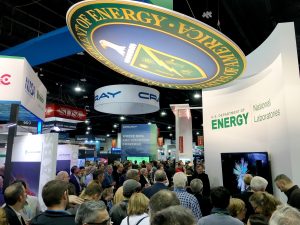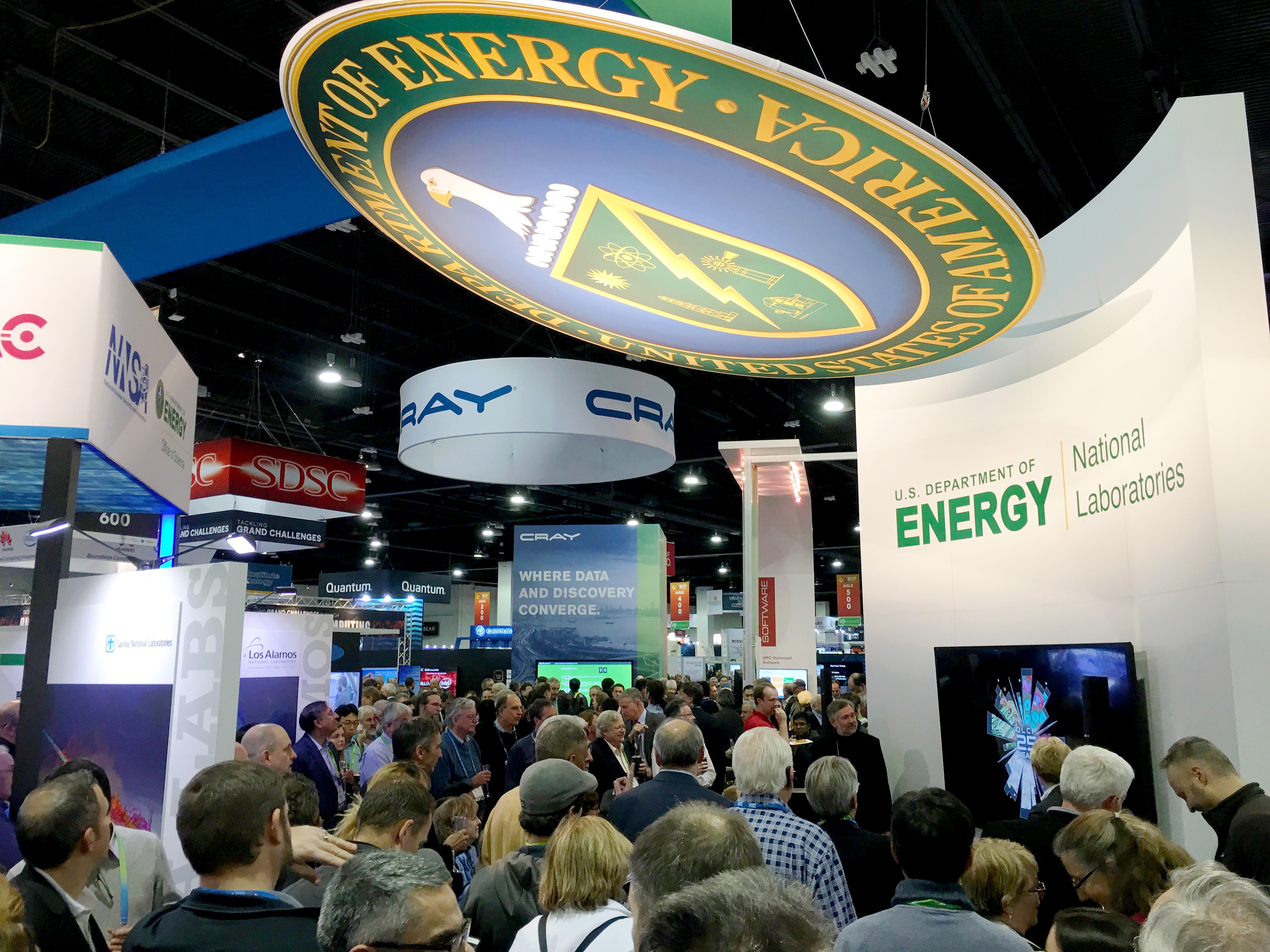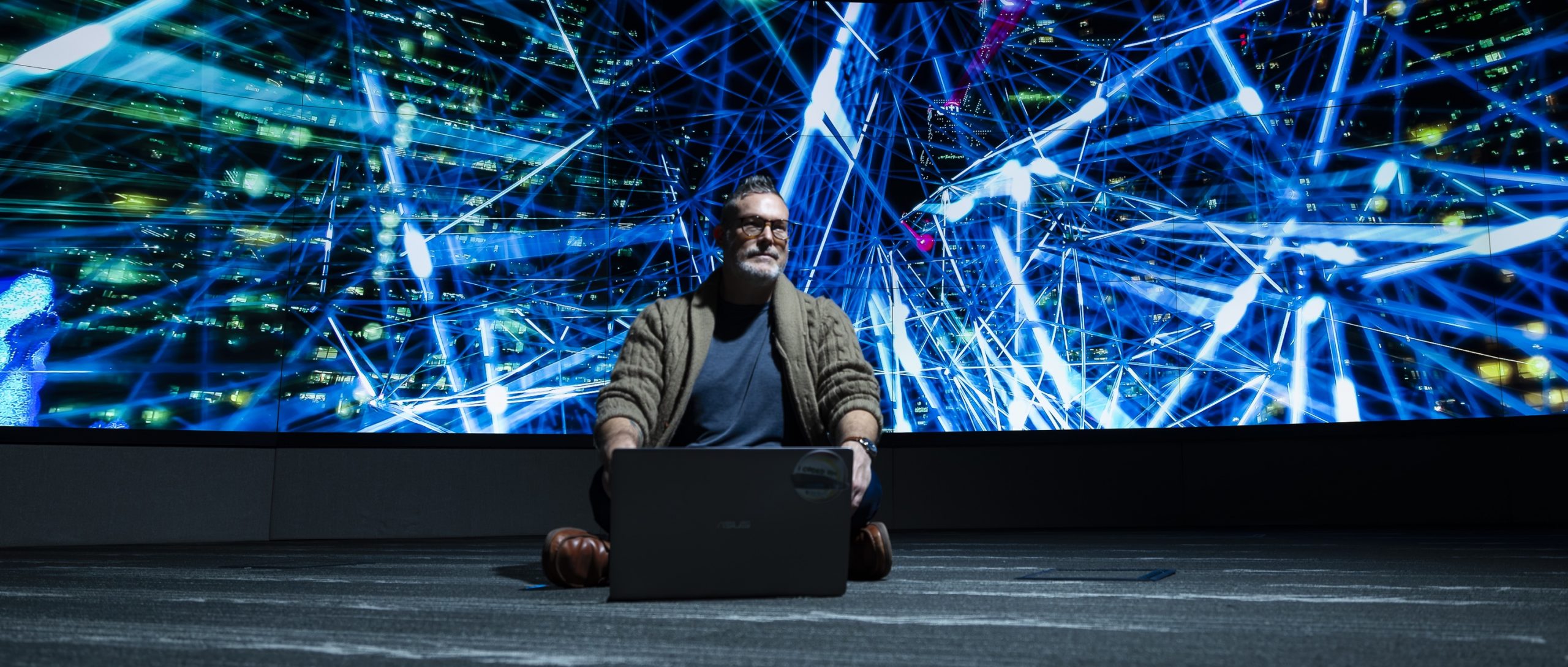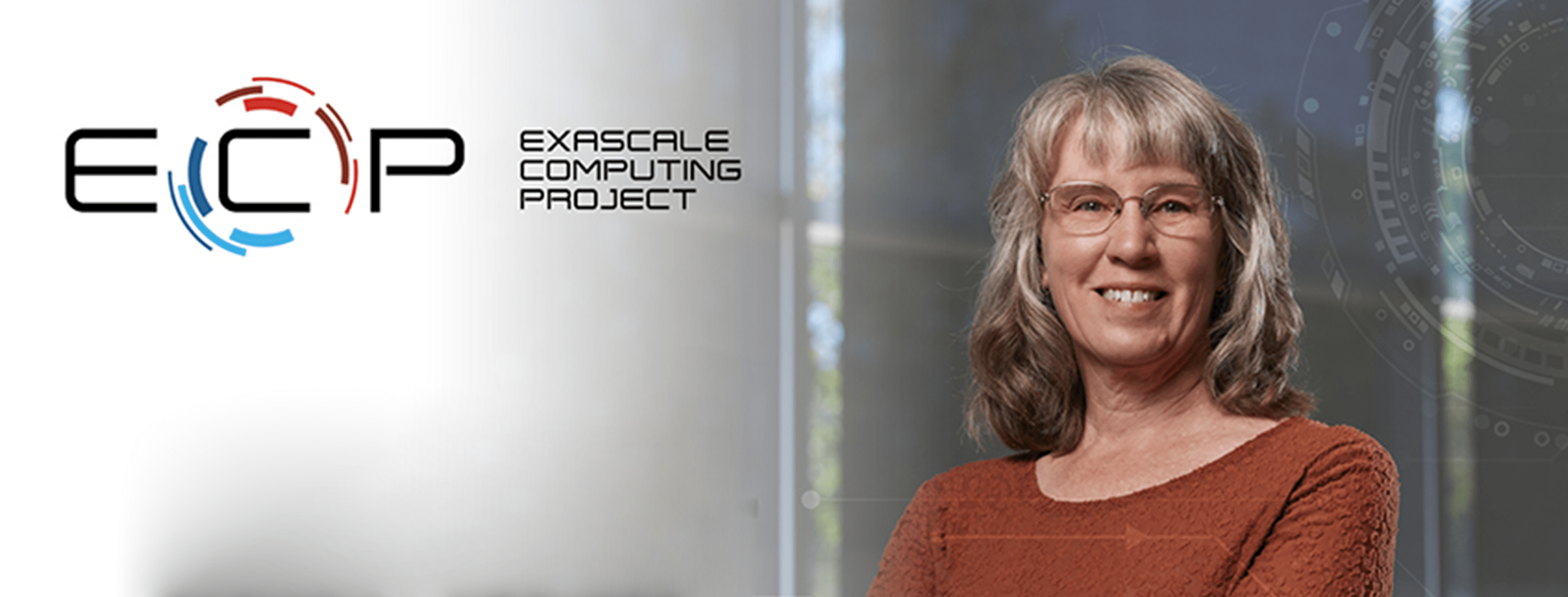The US Department of Energy’s (DOE’s) Oak Ridge National Laboratory (ORNL) and Oak Ridge Leadership Computing Facility (OLCF), a DOE Office of Science User Facility located at ORNL, played a key role this year in SC, the annual international conference of high-performance computing (HPC), networking, storage, and analysis.
Held November 12–17 in Denver, SC17 gave OLCF staff members the opportunity to share their work and knowledge with the HPC community and learn about the latest technologies and accomplishments from the world’s leading vendors, research organizations, and universities. The theme of this year’s conference was “HPC Connects.”

The OLCF celebrated 25 years with a short presentation in the DOE booth at SC17. Jeff Nichols, ORNL associate laboratory director for Computing and Computational Sciences, and Barbard Helland, DOE Advanced Scientific Computing Research (ASCR) associate director, delivered the presentation.
At the conference, OLCF staff members participated in a wide variety of activities, including tutorials, workshops, panel discussions, invited talks, poster sessions, technical paper presentations, and birds of a feather sessions.
Several ORNL staff members served on committees to help organize the conference. User support specialist/programmer Veronica Vergara Larrea served on the Inclusivity and Student Volunteers committees and was deputy chair of the Space committee. HPC systems Linux/storage administrator Dustin Leverman served on the Inclusivity committee and was the deputy chair of the Infrastructure and Security committees. In the Technical Program, computer scientist liaison task lead Judith Hill served as vice chair of the Algorithms committee, computational scientist Bronson Messer served on the Applications committee, and HPC data scientist Fernanda Foertter served on the Tutorials and Birds of a Feather committees.
The DOE booth was central to many of the OLCF’s SC17-related activities, hosting presentations and tutorials and serving as a central meeting spot. OLCF kicked off the first night of the exhibits with an OLCF 25th anniversary celebration in the booth, drawing a crowd to honor this milestone for the facility. Jeff Nichols, ORNL associate laboratory director for Computing and Computational Sciences, and Barbara Helland, DOE Advanced Scientific Computing Research (ASCR) associate director, shared a few memories and then showed the OLCF anniversary video.
Also taking place in the DOE booth were presentations and demonstrations from OLCF users and staff, including user C. S. Chang from Princeton Plasma Physics Laboratory and the following OLCF staff: Quantum Computing team lead Travis Humble; Biomedical Sciences, Engineering, and Computing Group leader Gina Tourassi; tools developer Oscar Hernandez; computer scientist Norbert Podhorszki; and Director of Science Jack Wells. OLCF staff also participated in recruiting sessions and roundtable discussions at the booth, drawing talented people to potential new opportunities at DOE computing facilities.
The Summit supercomputer, scheduled to come online in 2018 as America’s next top supercomputer for open science, was featured throughout SC17, especially with OLCF talks and displays in vendor partner booths. IBM featured its Power Systems AC922 nodes along with a mocked-up Summit supercomputer in its booth. Software developer Manju Gorentla Venkata presented in the Mellanox and NVIDIA booths on application development for Summit. Scientific Computing Group leader Tjerk Straatsma presented on application readiness at the NVIDIA, Mellanox, and Tokyo Institute of Technology booths. Additionally, Wells took the stage at the Mellanox “Listen to Your Inner Speed” evening event, discussing Summit and the Mellanox interconnects with Mellanox President Eyal Waldman.
Wells cochaired the OpenPOWER Academic Discussion Group Workshop, which took place in conjunction with SC17. The workshop focused on the use of OpenPOWER technologies for high-performance computing and data analysis, promoting exchange of results among the academic OpenPOWER members, enhancing their technical knowledge, and facilitating networking. Straatsma presented on Summit application readiness, while Hernandez presented on the Summit programming environment.
OLCF Director Buddy Bland delivered the keynote address titled “Lessons Learned in 40 Years of HPC” at the Eighth Annual Workshop for the Energy Efficient HPC Working Group, a workshop that closes the gap between facility and information technology systems with regard to energy efficiency analysis and improvements. Computing and Facilities director Jim Rogers served as an organizer for the workshop.
Several papers coauthored by OLCF staff members were presented at SC17, including a paper adopting a holistic memory access profiling approach to enable a better understanding of program–system memory interactions. The paper, “Understanding Object-Level Memory Access Patterns Across the Spectrum,” was coauthored by Technology Integration Group leader Sudharshan Vazhkudai and research scientist Chao Wang.
A team from OLCF coauthored “GUIDE: A Scalable Information Directory Service to Collect, Federate, and Analyze Logs for Operational Insights into a Leadership HPC Facility,” including Vazhkudai, systems integration programmer Ross Miller, HPC systems engineer Christopher Zimmer, HPC systems engineer Feiyi Wang, HPC systems engineer Sarp Oral, technology integration specialist Raghul Gunasekaran, and senior HPSS developer Deryl Steinert.
Another ORNL team coauthored a paper titled “TagIt: An Integrated Indexing and Search Service for File Systems.” This paper’s authors were HPC systems engineer Hyogi Sim, Vazhkudai, R&D staff member Geoffroy Vallee, and computer science researcher Seung-Hwan Lim. Lim, Sim, Gunasekaran, and Vazhkudai coauthored “Scientific User Behavior and Data-Sharing Trends in a Petascale File System.”
OLCF staff members also shared their expertise with attendees during multiple tutorials. Messer presented on GPU-accelerated POWER nodes at the tutorial titled “Application Porting and Optimization on GPU-Accelerated POWER Architectures,” and Computer Science Research Group leader David Bernholdt presented at the tutorial titled “Better Scientific Software.” Additionally, Foertter presented at the tutorial titled “Kokkos: Enabling Manycore Performance Portability for C++ Applications and Domain Specific Libraries/Languages,” and computer visualization specialist David Pugmire presented at the “Scalable HPC Visualization and Data Analysis Using VisIt” tutorial.
Birds of a feather sessions—forums that allow participants to gather and discuss topics of common interest—featured OLCF session leaders including Wells, User Assistance and Outreach Group leader Ashley Barker, Bernholdt, Rogers, OLCF operations manager Stephen McNally, Oral, and Foertter.
Oak Ridge National Laboratory is supported by the US Department of Energy’s Office of Science. The single largest supporter of basic research in the physical sciences in the United States, the Office of Science is working to address some of the most pressing challenges of our time. For more information, please visit science.energy.gov.






